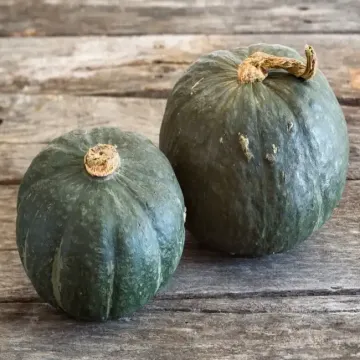Buttercup squash, known for its rich, sweet flavor and dense texture, is a winter squash variety that thrives in home gardens. This versatile vegetable is prized for its suitability in soups, roasts, and even desserts. With its dark green, round shape and distinct button on the blossom end, Buttercup squash is both attractive and nutritious, offering a good source of vitamins A and C, fiber, and potassium.
History and Background
Buttercup squash originated in Central and South America and has been cultivated for thousands of years by Indigenous peoples. It became popular in the United States in the early 20th century, particularly in regions with longer growing seasons. Today, it's a staple in many home gardens due to its ease of growing and long storage life.
Planting Buttercup Squash
To successfully grow Buttercup squash, start by selecting a sunny location with well-draining soil. This plant prefers a soil pH of 6.0 to 6.8. Buttercup squash is typically planted in hills, with 2 to 3 seeds per hill. After germination, thin the plants to the strongest seedling. For direct sowing, plant seeds after the last frost when the soil temperature reaches at least 70°F (21°C).
Alternatively, for an earlier start, you can sow seeds indoors about three to four weeks before the last expected frost date, then transplant seedlings outdoors once the danger of frost has passed. Be mindful that squash plants are sensitive to root disturbance, so handle transplants with care.
Growing and Caring for Buttercup Squash
Buttercup squash plants are heavy feeders and benefit from regular fertilization, particularly during the flowering and fruiting stages. An all-purpose fertilizer with a balanced NPK ratio is ideal for maintaining vigorous growth. Mulching around the plants helps conserve soil moisture and control weeds.
Provide consistent watering, especially during dry periods, as uneven moisture can lead to fruit cracking or poor development. Buttercup squash vines can sprawl, so ensure they have enough space to spread—typically, each plant requires at least 4 to 6 feet of growing room.
Pollination and Pests
Like other squash plants, Buttercup squash relies on pollinators such as bees. Planting companion plants that attract pollinators, like marigolds or borage, can improve pollination rates. Common pests include squash bugs, cucumber beetles, and vine borers. To mitigate these pests, consider using row covers early in the season, hand-picking insects, or applying organic insecticidal soap as needed.
Powdery mildew can also be an issue, particularly in humid conditions. Proper spacing, good air circulation, and watering at the base of the plant can help prevent fungal diseases.
Harvesting Buttercup Squash
Buttercup squash is ready to harvest when the skin has hardened, and the stem turns brown and woody. This usually occurs about 100 to 110 days after planting. It's important to cut the squash from the vine, leaving a few inches of stem attached, as this helps extend its storage life.
After harvesting, cure the squash by allowing it to sit in a warm, dry place for about 10 days. This process improves its flavor and storage potential. Once cured, Buttercup squash can be stored in a cool, dark place for several months.
Culinary Uses and Health Benefits
Buttercup squash's sweet, nutty flavor and creamy texture make it a versatile ingredient in both savory and sweet dishes. It can be roasted, steamed, pureed, or used in soups and stews. Rich in beta-carotene, fiber, and vitamins A and C, Buttercup squash supports healthy vision, immune function, and digestive health.
Buttercup squash is an excellent addition to any home garden, offering a rewarding harvest of flavorful and nutritious fruits. With proper care and attention, you can enjoy this winter squash throughout the fall and winter months, making it a valuable staple for homegrown meals.

